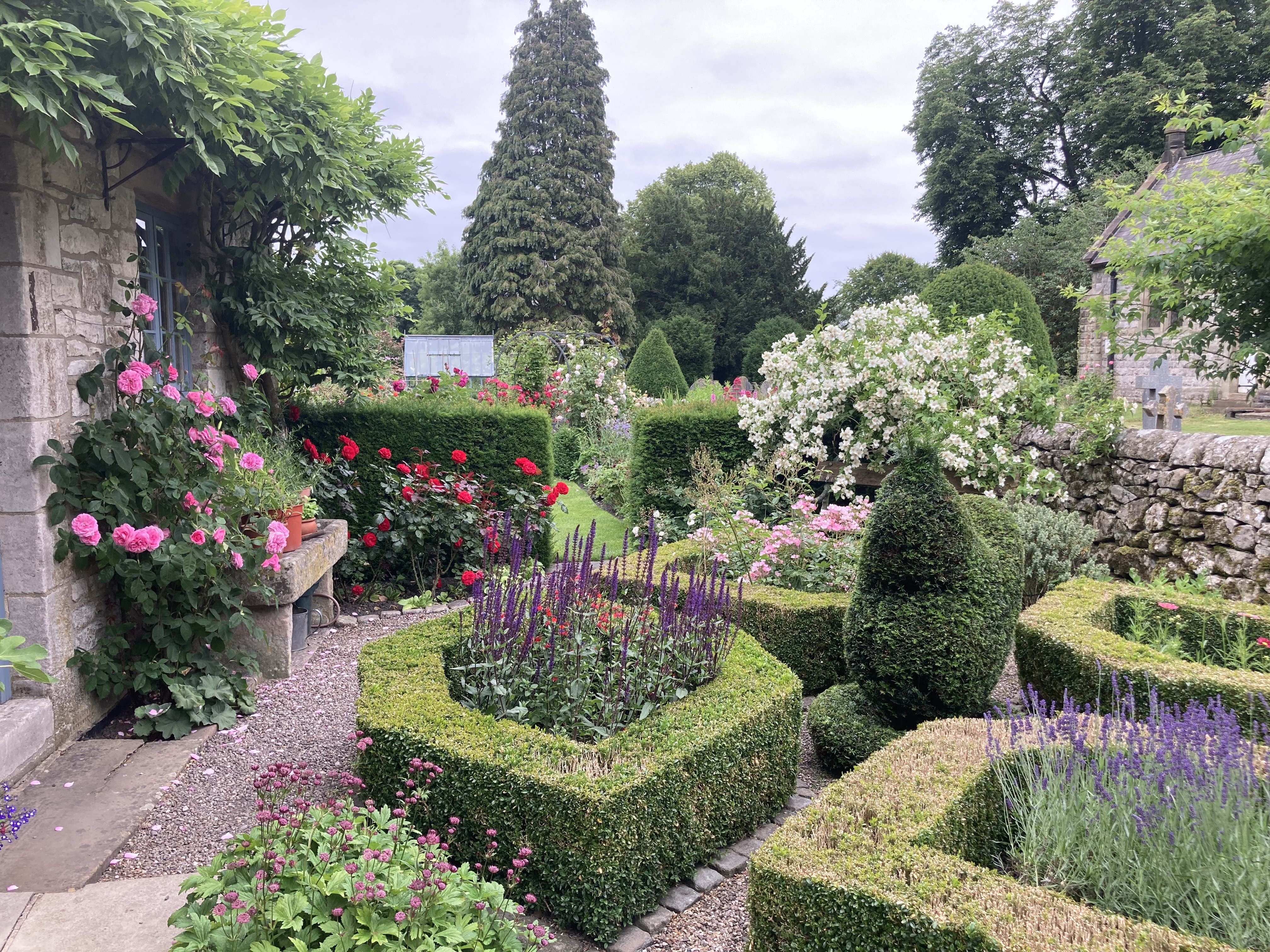What do you do with a garden so long and thin that, at first glance, it has aspirations only to be a landing strip? That was the situation that faced the retired interior architect and local gardener Lynette Coyne when she moved to her cottage in the Derbyshire village of Parwich. “The garden was only vegetables originally and when we moved in it had not been tilled,” she says. “There was not a thing growing except weeds.”
It has been almost two decades since Coyne and her partner, Richard Tresidder, started to transform that landing strip. She is an optimist — which means that where I, and perhaps you, might see problems she saw opportunities. The garden, or as it was weed patch, was 65m long and varied in width from 2.5m to 9m. There were no straight lines and, just to add to the challenges, it bordered a churchyard on one side and a road on the other. Sometimes people on the road would shout to people in the churchyard: it took talking over the garden fence (in this case low stone walls) to a whole new level.
• Garden pests and how to get rid of them — from slugs to blackflies
This challenge could be an ideal exam question for aspiring garden designers. The problems — sorry, opportunities — included finding ways to keep the friendly cottage vibe while creating some privacy and height and (somehow) widening the strip visually. As convivial villagers, they didn’t want to cut off their garden from the village. Here is their rags to roses story about what came next, and the rules they followed:
Create non-linear spaces
The first thing planted was a beech hedge behind the house, next to the road. Crucially, it was only 10.5m long: this made it a feature instead of a barrier. In front of it, they planted a square of lawn, bordered by perennial beds. Beyond that was a veg garden and, finally, a shadier “woodland” area. The path curves round the house, disappearing into the lawn, reappearing at the side of the veg garden before curving into the shadier area. The “rooms”, now the garden is mature, are divided by a stone water tank, a low yew hedge, a partial picket fence, a rose-laden arch and a small greenhouse.
Blend in with the landscape
It was important that the garden relate to the churchyard. “By doing that I was able to pinch some visual space,” Coyne says. There were three yews planted next to the shared wall: she decided to “look after them” — that is, surreptitiously prune — because otherwise her garden would only be in the shade. Her goal, in the design, was to blend the churchyard and the garden. “The connection between the two was always uppermost in my mind. I wanted to stand in my garden and look beyond it and have it look like my garden was bigger than it was.”

It was important for Coyne to blend the churchyard (to the right) and the garden
Trick the eye
An intriguing addition, which borders a garden room that is attached to the cottage, was a box parterre with four diamond-shaped beds. Coyne thought it would be low maintenance and “pleasing” to look at in the winter. She realised, while drawing out the parterre plan, that squares weren’t going to work in a garden where nothing was symmetrical anyway. “I needed to draw the eye to things that I thought were important in the churchyard as a way of enlarging my space. So it was done on the diagonal.”
• What I’ve learnt from open gardens: the best designs
Chaotic colours can be a good thing
The planting, inside the parterres, is often a bit messy, using plants from the herbaceous border. It provides unity, as well as a bit of rambunctiousness. “I wanted to carry some of the chaotic colouring in the herbaceous border into a box garden so that it was formal but informal,” she says. Roses that climb walls and tumble from arches are mirrored by similar roses in the graveyard (some planted by them).

Coyne wanted her garden to feel timeless
Embrace what came before
The garden still feels exactly right for a cottage. There is some privacy from the now pleached beech hedge but, otherwise, it remains open for passers-by to chat away. Trees are pruned to provide interest but not block views. Neither Coyne nor Tresidder would have called themselves gardeners beforehand but they certainly are now: this is a garden that has been lauded in print (it was once on the cover of the English Garden magazine) as well as by visitors and passers-by. “I want it to feel timeless,” Coyne says. “I wanted to keep what attracted me when I first came: the wonky pathm the little stone planting areas, the big stone trough.” These were the things that made her think it could, one day, be a lovely cottage garden. Mission accomplished.


Comments are closed.